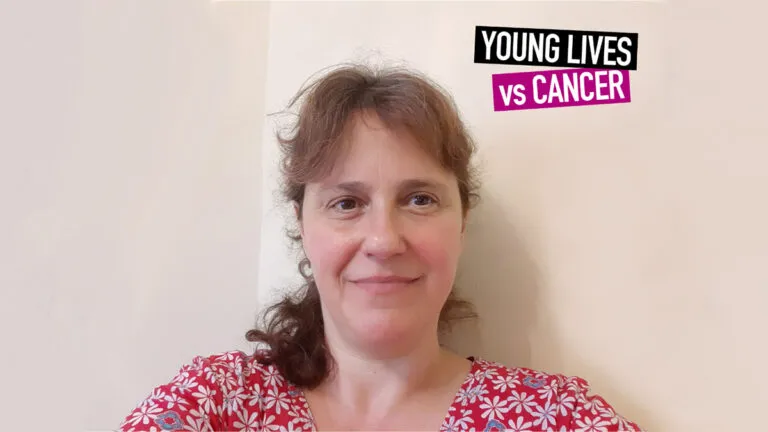How insecure housing is impacting young cancer patients
Published: by Guest blog

This is a guest blog from a Young Lives vs Cancer Social Worker. The charity recently signed an open letter with Shelter calling for unfair evictions to be scrapped in the Renters Reform Bill, so that young people with cancer can live and recover in safe, secure homes.
My name is Rebecca and I’m a Young Lives vs Cancer Social Worker. I support children and young people with cancer and their families throughout treatment and beyond. Part of my role is to take stress away from a family so they can focus on what matters: getting through their child’s treatment. This can include liaising with schools, helping to access benefits and grants, or increasingly, helping with poor or inappropriate housing – an issue which makes the quality of life for children with cancer and their families significantly worse.
More and more I’m supporting families with children undergoing cancer treatment who are living in poor-quality housing, with issues such as severe mould and overcrowding. This would be an issue for any family, but for children with cancer who are undergoing treatment like chemotherapy, the risk of infection is high. Living in a room with mould on the walls and in overcrowded spaces further increases the risk of infection and other impacts on their health, leading to being admitted to hospital or worse.
One child I supported was diagnosed with a brain tumour at just five years old and their family was living in a property with mould, damp and water leaking down the walls. They lived in one bedroom with five family members as the other bedroom was uninhabitable because of the mould. The mould and damp meant the child with cancer (and their younger brothers and sister) had eczema, asthma and itchy eyes; this is on top of having cancer and the side effects of their treatment. They were in temporary accommodation and finding a good-quality rented property that would accept a family reliant on benefits was difficult, despite acknowledgement that the housing was a health risk.
It can be difficult to find alternative accommodation to suit a family’s needs, because not only is the social housing system incredibly difficult to navigate, but these families also need to be near their treatment hospital and their support networks for things like childcare. Who is going to help the brother or sister go to school when one parent is in the hospital and the other at work? It is often their neighbours, friends or family. Moving away from these support networks is not an option, so families are stuck in these awful housing situations and the system leaves them with nowhere to go. When children leave hospital after having treatment the expectation is that they are going home to recover and enjoy family time. However, for those returning to poor or inappropriate housing, this is not the reality. It is vital that these children have safe, secure and accessible accommodation for both their treatment outcomes and their quality of life.
In my role, I support families by writing supporting letters for housing and compiling medical letters to explain, for example, why a child needs their own bedroom. However, even when this information is sent, there just is not enough good-quality social housing or rented accommodation available. I then spend a lot of time chasing local authority housing caseworkers for progress, but housing caseworkers are swamped with referrals and requests. This is frustrating for families because they see their child facing the challenges of a cancer diagnosis and, on top of that, experience how their accommodation is making their child’s health worse.
Many people may assume a social worker can directly advocate for a family to find better accommodation, but this is not true. What we can do is support families to provide the information they need and liaise for them, helping to reduce the stress and burden on them – but if there is a lack of social housing then we are limited with what we can do. Costs skyrocket for a family when a child has cancer – including costs of travelling to hospitals, energy and household bills, childcare and food – so getting a deposit together for rented housing can feel like a mountain to climb. This is compounded when many landlords won’t accept a family that is claiming benefits, which is the case for many when their child is undergoing cancer treatment.
I wanted to write this blog because I bear witness to the desperate housing difficulties faced by these families on top of the stress of having a child going through cancer treatment. Our homes should be our sanctuary – but for many families of a child with cancer, home is a place of stress that makes their child’s health worse. While the housing system is so overstretched, even with significant medical needs, the families of children I support find it hard to access good-quality housing. It motivates me to take all the action I can and keep emailing and complaining countless times, because as a Young Lives vs Cancer Social Worker I may have some leverage that can help. But what happens to families without an advocate who are living in unsafe accommodation when their child has cancer?
It’s critical that we have a social housing and private rental system that offers safe and accessible housing for children and young people with cancer and their families.
Young Lives vs Cancer agree that until there is more social housing, families will remain on the waiting list for an affordable, stable home. And while section 21 ‘no fault’ evictions exist, there is little security in the private rented sector. This is why a strong Renters Reform Bill that truly tackles insecurity in the sector is vital.